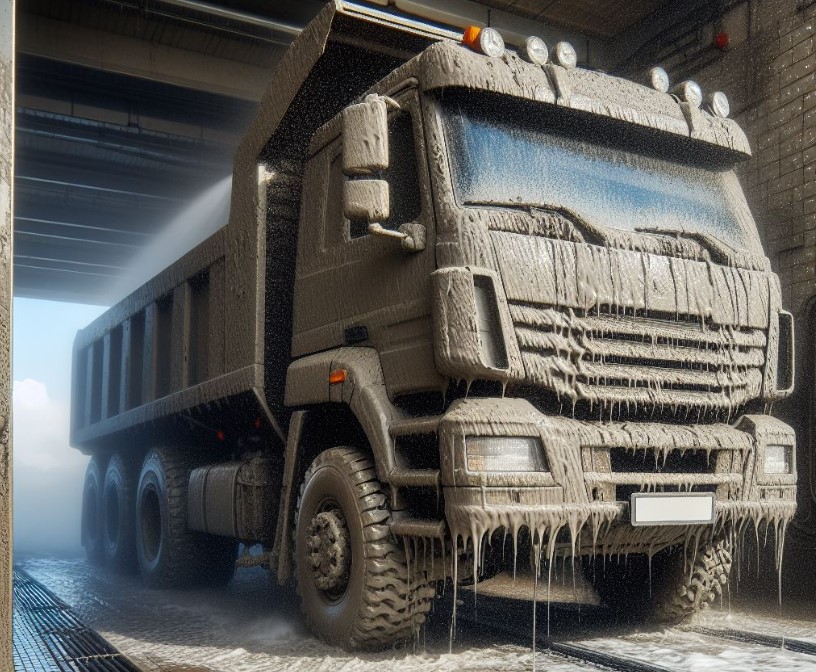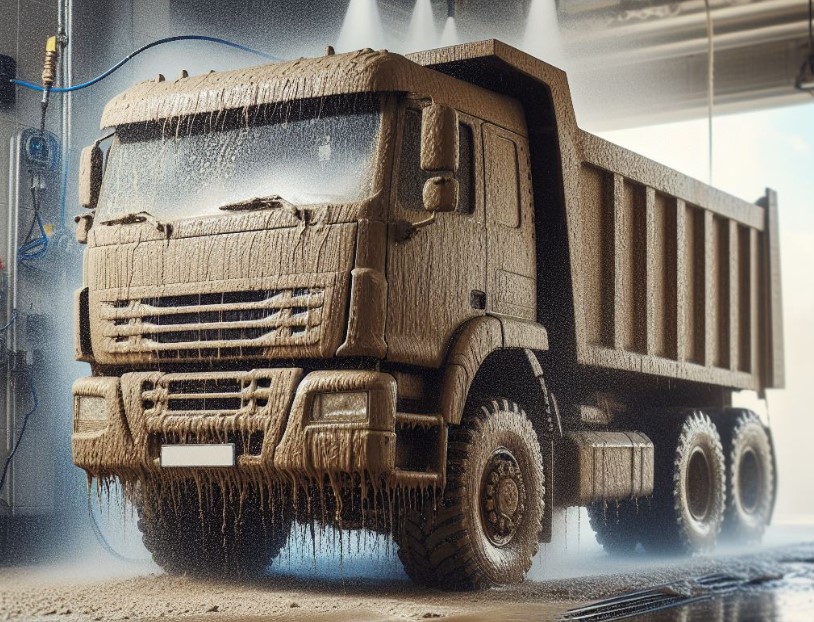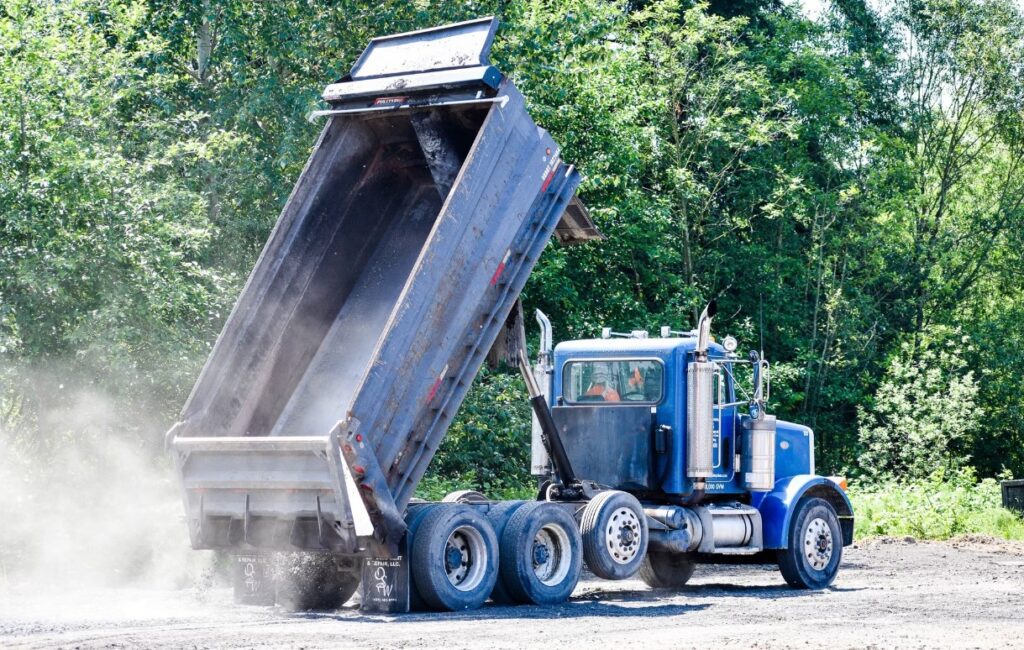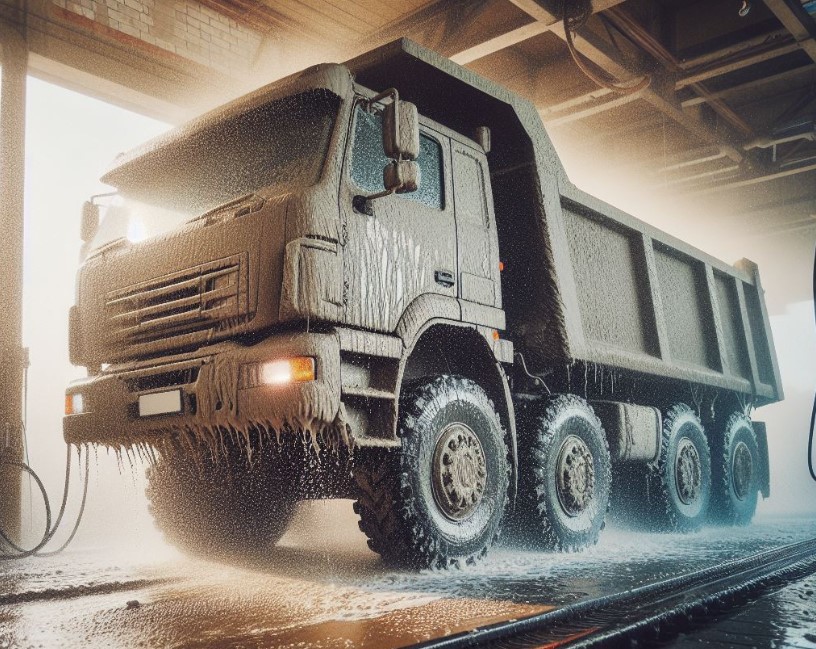How To Keep Dirt From Sticking In Dump Truck? Explained
When operating a dump truck, one common challenge is How To Keep Dirt From Sticking In Dump Truck? This issue can affect productivity, increase maintenance costs, and even lead to safety hazards. In this comprehensive guide, we’ll explore effective strategies and innovative solutions to tackle this problem. Keeping your dump truck’s bed clean not only enhances efficiency but also prolongs the vehicle’s lifespan.
Key Takeaways
- Implement preventive measures like using non-stick liners.
- Regular maintenance and cleaning practices.
- Opt for specialized coatings to reduce dirt adhesion.
- Understand the material being hauled to choose appropriate solutions.
- Explore advanced technologies for hassle-free maintenance.
How To Keep Dirt From Sticking In Dump Truck?
Ensuring that dirt does not stick to the bed of a dump truck is vital for operational efficiency, safety, and maintenance. Here are detailed steps to achieve this:

1. Choosing the Right Truck Bed Liner
- Material Selection: Opt for high-quality liners made from materials like high-density polyethylene (HDPE) or ultra-high molecular weight (UHMW) polyethylene. These materials provide a slick, non-stick surface.
- Installation: Proper installation is crucial. Ensure that the liner fits snugly and covers the entire bed surface without any gaps or wrinkles.
- Maintenance: Regularly inspect the liner for damage such as cuts or wear and replace it when necessary.
2. Applying Non-Stick Coatings
- Selection of Coatings: Choose industrial-grade coatings like silicone or epoxy-based products designed specifically for dump trucks.
- Application Process: Apply the coating evenly across the truck bed. Follow the manufacturer’s instructions for drying and curing times.
- Reapplication: Depending on usage, reapply the coating periodically to maintain its effectiveness.
3. Regular Cleaning and Maintenance
- Cleaning Schedule: Establish a regular cleaning schedule, ideally after each use or at least once a week.
- Cleaning Techniques: Use high-pressure water jets to remove dirt and debris. For stubborn residue, mild detergents or specialized cleaning agents can be used.
- Inspection: Regularly inspect the truck bed for cracks, rust, or any damage that can contribute to dirt sticking.
4. Using Release Agents
- Types of Release Agents: Utilize environmentally friendly release agents like water-based solutions or biodegradable oils.
- Application: Spray or coat the bed with the release agent before loading. Ensure a thin, even layer to avoid material contamination.
- Frequency: Apply the release agent as needed, depending on the type of material being transported and weather conditions.
5. Managing the Material Load
- Loading Techniques: Avoid overloading. An evenly distributed load can reduce the likelihood of dirt sticking.
- Material Moisture: If possible, adjust the moisture content of the material. Dryer materials tend to stick less compared to wetter ones.
6. Implementing Advanced Technologies
- Automated Systems: Consider using automated cleaning systems for consistent and thorough cleaning.
- Monitoring: Employ sensors or tracking systems to monitor dirt build-up and the effectiveness of preventive measures.
7. Educating Operators and Staff
- Training: Provide training to operators and maintenance staff on best practices for preventing dirt from sticking.
- Awareness: Keep the team updated on new materials, technologies, and techniques that can help in this regard.
Preventive Measures
Non-Stick Liners
Non-stick liners are a popular solution for keeping dirt from adhering to dump truck beds. These liners, made from materials like polymer, create a slick surface, preventing dirt and debris from sticking.
- Benefits of Non-Stick Liners:
- Reduced material residue after unloading.
- Less time and effort in cleaning.
- Protection against bed abrasion and corrosion.
Regular Maintenance
Maintaining a clean dump truck bed is crucial for preventing dirt buildup. Regular washing and inspections can significantly reduce the likelihood of dirt sticking.
- Effective Cleaning Techniques:
- High-pressure washing to remove stubborn dirt.
- Routine inspections for cracks or damage where dirt can accumulate.
Specialized Coatings

Advanced Protective Coatings
Applying specialized coatings to the dump truck bed can be a game-changer. These coatings are designed to repel dirt and make cleaning easier.
- Types of Coatings:
- Epoxy-based coatings for durability.
- Silicone-based coatings for easy cleaning.
Cost-Benefit Analysis
While coatings can be an investment, their long-term benefits in reducing maintenance time and costs are substantial.
- Long-Term Savings:
- Lower maintenance costs over the truck’s lifespan.
- Increased operational efficiency due to less downtime.
Material Considerations
Understanding the Hauled Material
Different materials have different tendencies to stick. Understanding the properties of the material being hauled can guide the choice of preventive measures.
- Material-Specific Strategies:
- Using water for sticky materials like clay.
- Adjusting unloading techniques for different materials.
Custom Solutions for Specific Materials
Some materials may require unique solutions. Customizing the approach based on the cargo can lead to better outcomes.
- Innovative Practices:
- Tailoring bed liners for specific material types.
- Implementing different unloading angles and speeds.
Advanced Technologies
The Role of Technology in Prevention
Advancements in technology offer new ways to combat the problem of dirt sticking in dump trucks.
- Technological Innovations:
- Automated cleaning systems.
- Sensors for monitoring dirt buildup.
Future Trends
Exploring future trends and technologies can provide a competitive edge and make maintenance more efficient.
- Emerging Solutions:
- AI-based predictive maintenance.
- Use of drones for bed inspections.
How Do You Keep Asphalt From Sticking To A Dump Truck Bed?
Keeping asphalt from sticking to a dump truck bed is crucial for efficient operations in road construction and maintenance. The key is to use release agents or coatings that provide a barrier between the asphalt and the truck bed.
Commonly used release agents include diesel fuel (although this is becoming less favored due to environmental concerns), commercial non-petroleum-based products, and even simple household cooking sprays.

These agents should be applied thinly and evenly to prevent asphalt from adhering to the bed. It’s important to note that the choice of agent should be environmentally friendly and safe for the asphalt mixture.
Another effective method is using heat; some dump trucks have insulated beds or heating systems to keep the asphalt at a consistent temperature, reducing its tendency to stick.
How To Make Dump Truck Bed Slick?
Making a dump truck bed slick involves applying a layer that reduces friction and prevents materials from adhering to the bed. The most effective way to achieve this is by installing a non-stick liner made of materials like UHMW or HDPE, as mentioned previously.
These liners are durable, resistant to wear, and provide a smooth surface that helps materials slide off easily. Another method is applying specialized bed coatings.
These coatings, typically made from silicone or epoxy-based materials, create a slick, protective layer on the truck bed. Regular maintenance, including cleaning and timely reapplication of coatings or release agents, is also essential to maintain the slickness of the truck bed.
How Do You Keep Clay From Sticking To A Dump Trailer?
Clay, particularly when wet, is notorious for sticking to dump trailers. To prevent this, it’s essential to use a combination of appropriate liners and release agents.

Liners made from polymer materials work well for clay as they provide a non-stick surface. In addition to liners, applying water or biodegradable release agents before loading clay can significantly reduce sticking.
Some operators also suggest slightly overloading the trailer with clay, as the weight can help in dislodging stuck material during unloading. Regular cleaning to remove any residual clay is also vital to prevent buildup over time. Adjusting the moisture content of the clay, if possible, can also be beneficial, as drier clay tends to stick less.
Conclusion
In conclusion, effectively preventing dirt from sticking in dump trucks requires a multifaceted approach. By utilizing non-stick liners, regular maintenance, specialized coatings, and understanding the materials being hauled, operators can significantly reduce the challenges associated with dirt buildup.
Additionally, embracing advanced technologies and staying abreast of future trends can further enhance efficiency and reduce maintenance burdens. With these strategies in place, maintaining a clean and efficient dump truck becomes a more manageable task.
People Also Ask
How do automated cleaning systems improve the process of keeping dump trucks clean?
Automated cleaning systems can significantly enhance the cleaning process by ensuring consistent and thorough washing of the dump truck bed. These systems can remove dirt and debris more efficiently than manual cleaning, saving time and labor costs. They can also be programmed to clean at regular intervals, ensuring the truck bed is consistently maintained.
Can the type of material being hauled impact the choice of preventive measures against dirt sticking?
Yes, the type of material being hauled can greatly influence the choice of preventive measures. For instance, wet or sticky materials like clay might require different liner materials or additional release agents compared to dry materials like sand or gravel.
Are there any specific maintenance tips for non-stick liners in dump trucks?
To maintain the effectiveness of non-stick liners, regular inspections for scratches, gouges, or wear are essential. Avoid using sharp tools that can damage the liner. Cleaning the liner with appropriate cleaning agents and techniques is also important to preserve its non-stick properties.
Is it cost-effective to install a non-stick liner in an older dump truck?
Installing a non-stick liner can be a cost-effective solution for older dump trucks, especially if they are still in good operational condition. The liner can protect the bed from further wear and extend the truck’s usability, making it a worthwhile investment even for older models.

Welcome to the exhilarating world of Matt Rex, a professional car racer turned renowned vehicle enthusiast. Immerse yourself in his captivating blog as he shares heart-pounding adventures, expert reviews, and valuable insights on cars, trucks, jets, and more. Fuel your passion for speed and discover the beauty of vehicles through Matt’s engaging stories and meticulous expertise. Join the ever-growing community of enthusiasts who find inspiration and expert advice in Matt Rex’s blog—a digital hub where the thrill of speed meets the pursuit of knowledge.







